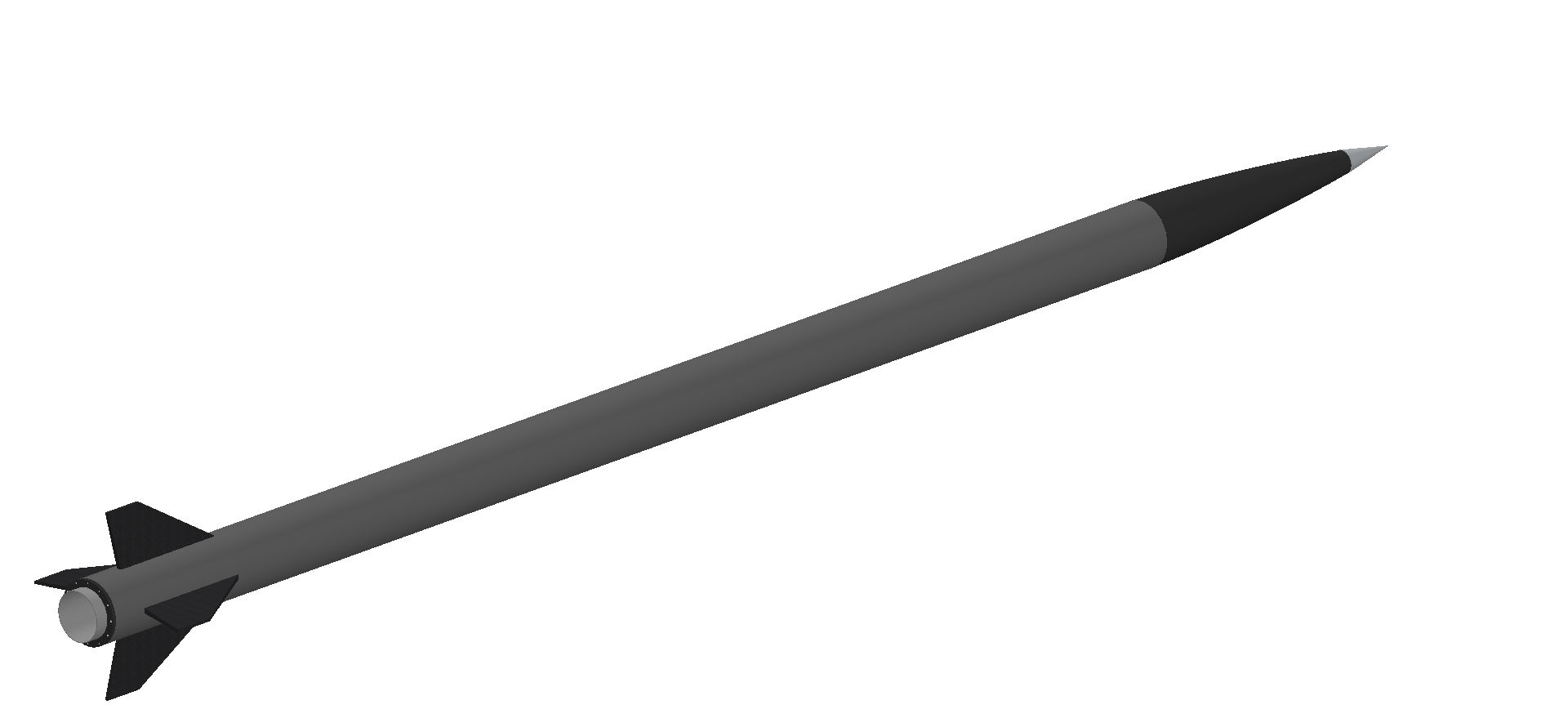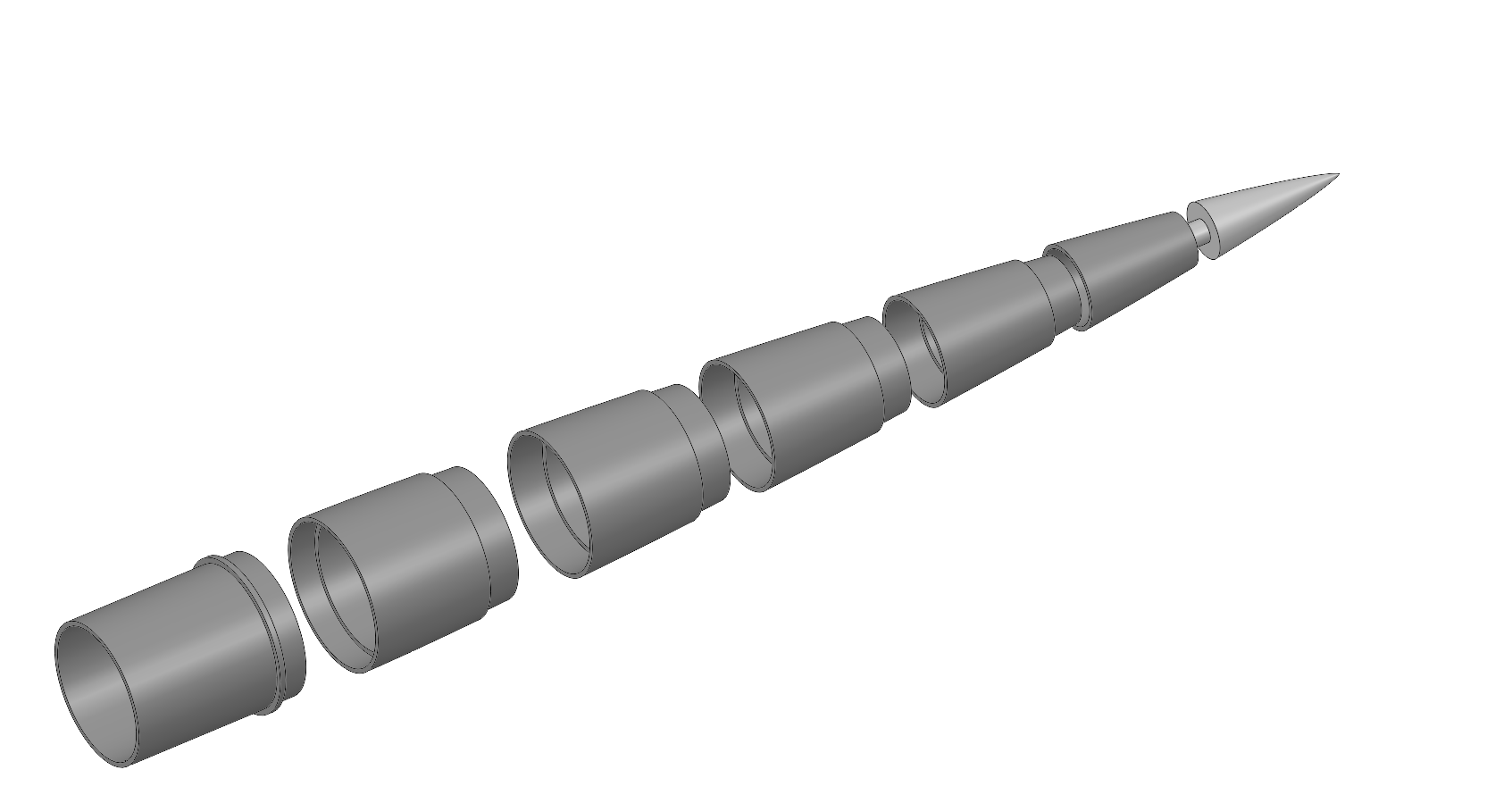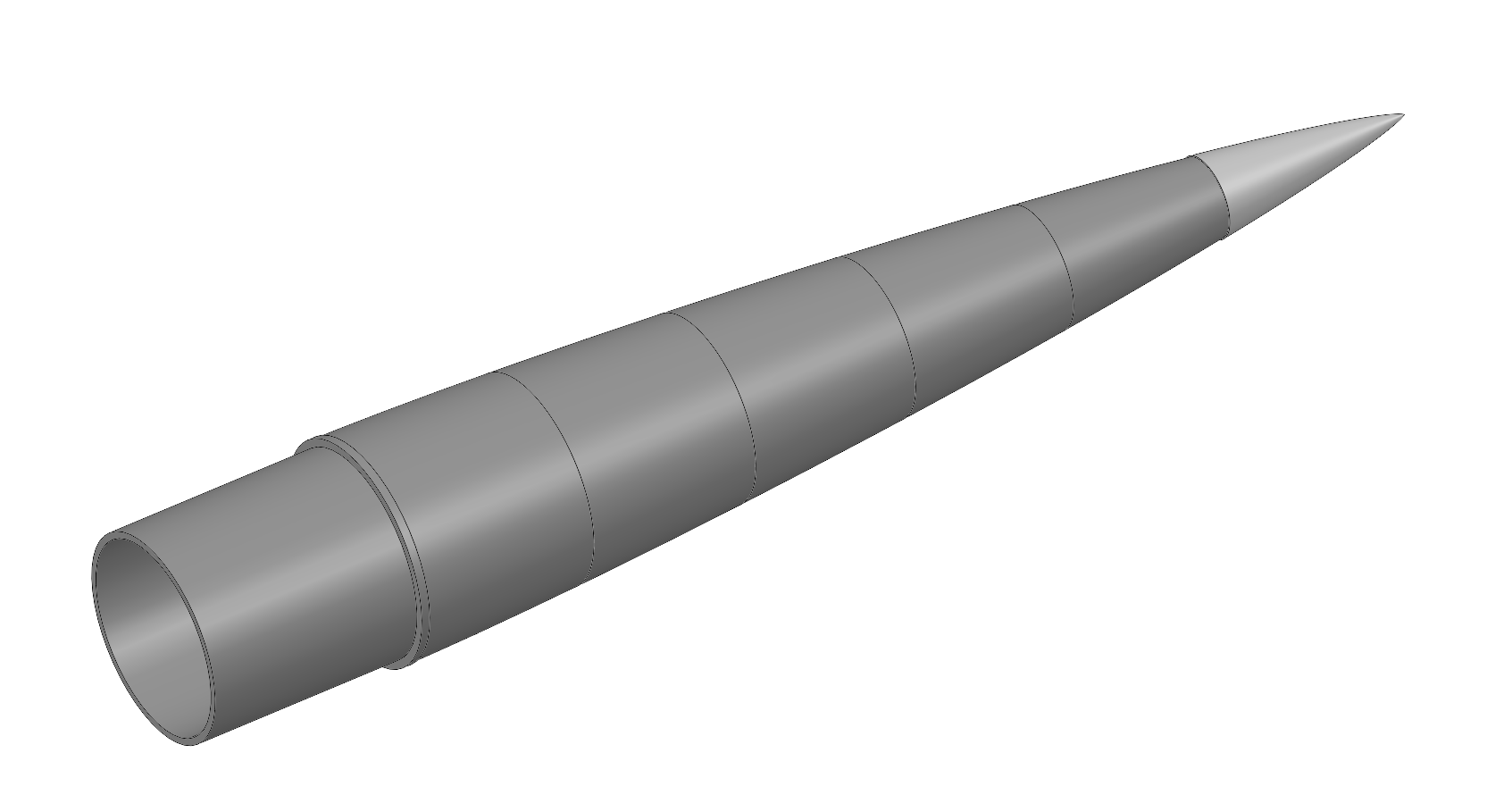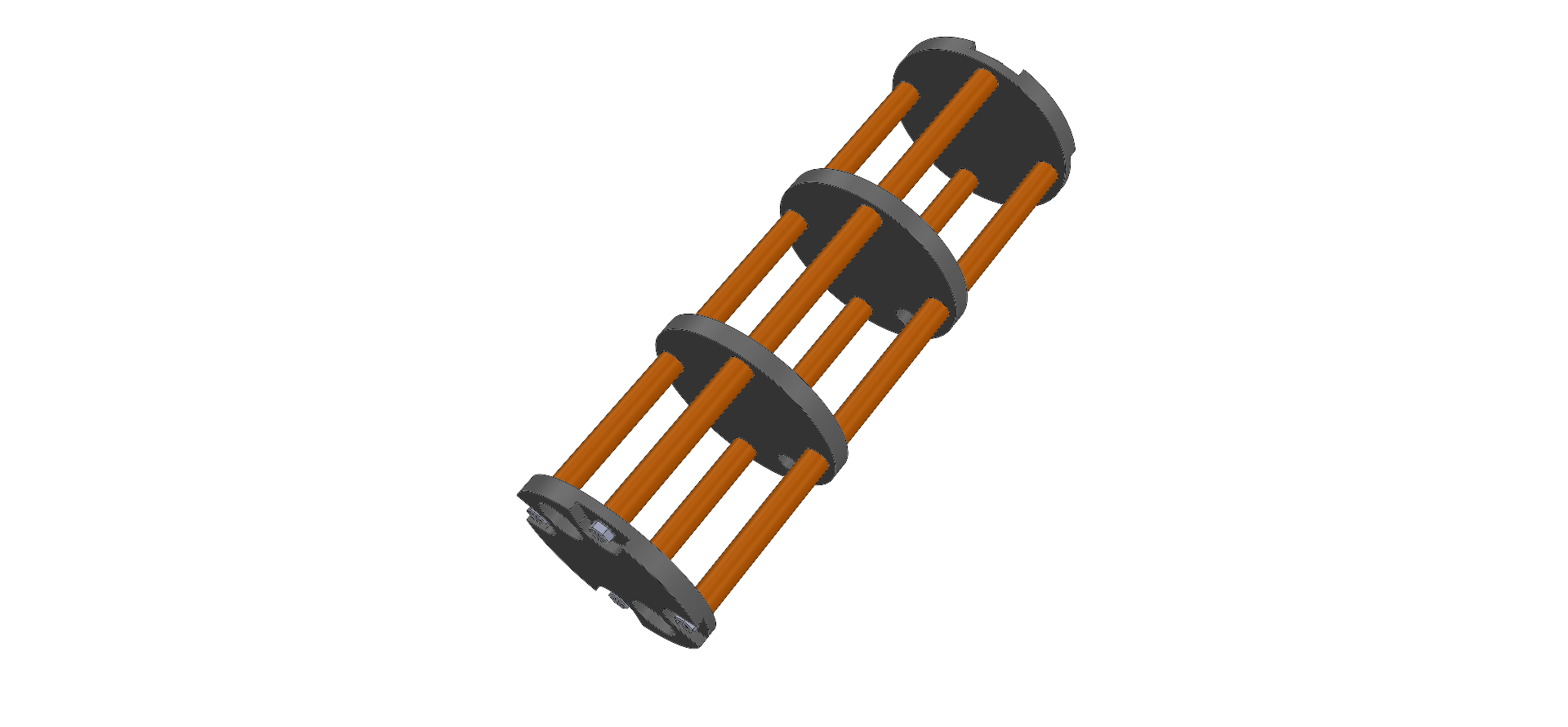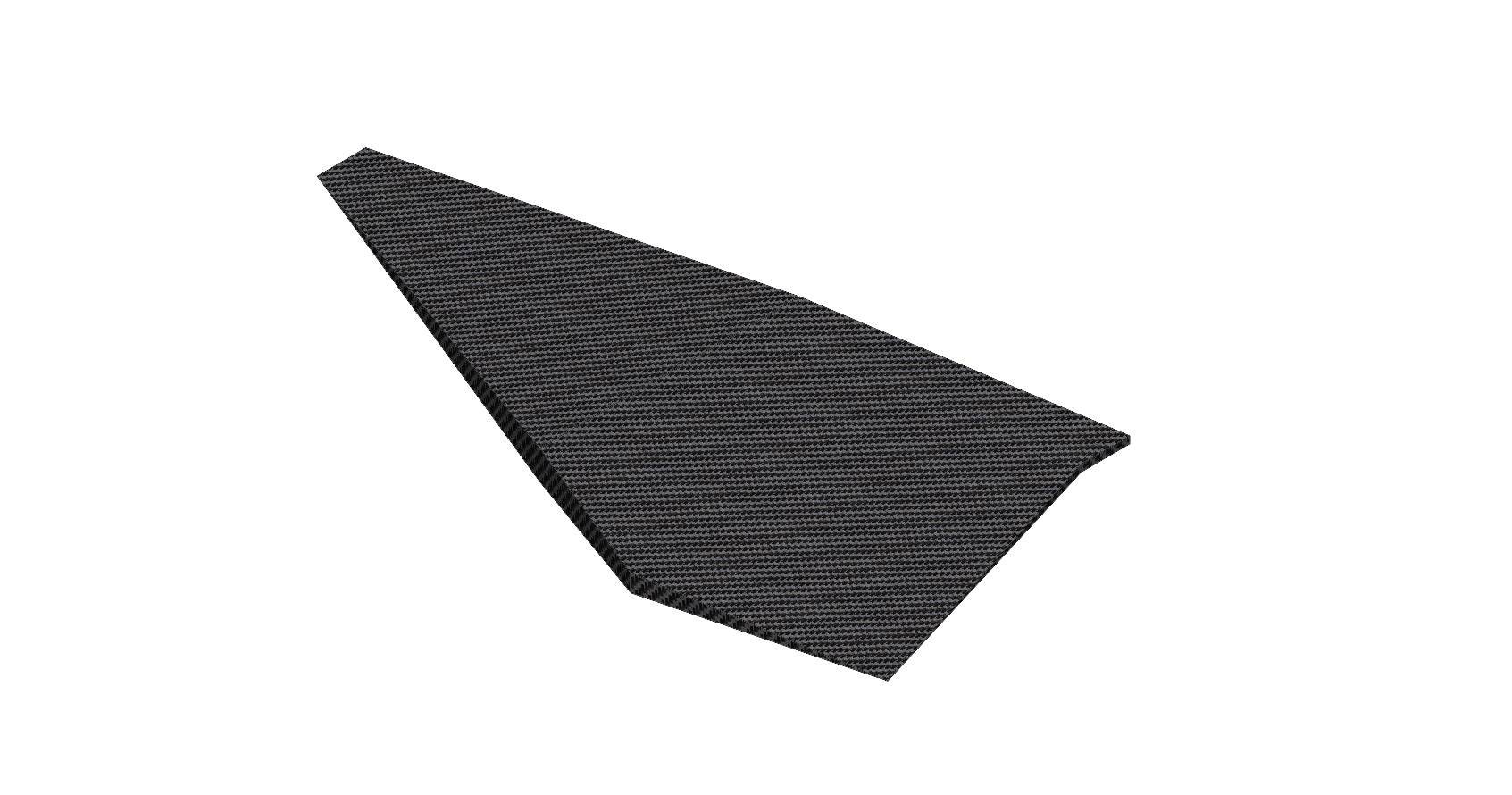Taranis Concept
Entering the Spaceport America Cup 2025 in the 30K | COTS category will require a rocket capable of reaching 30,000ft.
Our current concept Taranis will be faster, taller and heavier than our previous rockets, standing at 3.5 meters (12 ft) and reaching speeds of Mach 1.7(1,304 mph).
If successful, this will break the current Scottish student altitude record.
Onyx Nosecone
SRAD Flight Computer
Dual Deployment Recovery System
O5500X Motor
Scientific Payload
Tapered Carbon Fibre Fins
Onyx Nosecone
The nosecone will be 3D printed from Onyx carbon fibre filament with a Markforged Mk2 printer.
A Von Kármán nosecone geometry with a fineness ratio exceeding four has been selected for its aerodynamic efficiency at both supersonic and high sub-sonic speeds.
A carbon fibre skin will be applied to the nosecone which will improve its structural rigidity at high temperatures.
The nosecone assembly will also include an aluminium tip that will be machined on a lathe to act as a heat sink and an aluminium bulkhead to prevent parachute deployment into the nosecone.
Scientific Payload
The payload of this rocket will be functional and non-deployable, with the primary objective of collecting data to model characteristics of the rocket’s flight.
Specifically, it will measure strain, vibration, and spin rate using a suite of sensors, including strain gauges, accelerometers, and gyroscopes.
With a view to achieving a successful live transmission system in future years, supporting systems for real-time transmission will be developed. One such supporting system is the encapsulation of the housekeeping and payload data.
The housekeeping and payload data will be packetised and stored in accordance with the XML Telemetric & Command Exchange (XTCE) standard, a recognized protocol used by organizations such as ESA and NASA.
Payload Bays
Payload Support Structure
Tapered Carbon Fibre Fins
The fins will be manufactured in house from carbon fibre. The high Young's Modulus of carbon fibre, paired with a 6mm consolidated thickness, and further fibreglass tip to tip layup will ensure the fin flutter velocity is 150% that of the vehicle's velocity.
The gradual gradient in fin thickness provided by the tip-to-tip layup will provide different natural frequencies at different cross sections of the fins. This should further help mitigate the effect of flutter and ensure flutter velocity exceeds 50% of maximum rocket velocity.
The fin mounting will be set through the airframe and secured to the motor tube to improve the fin rigidity.


